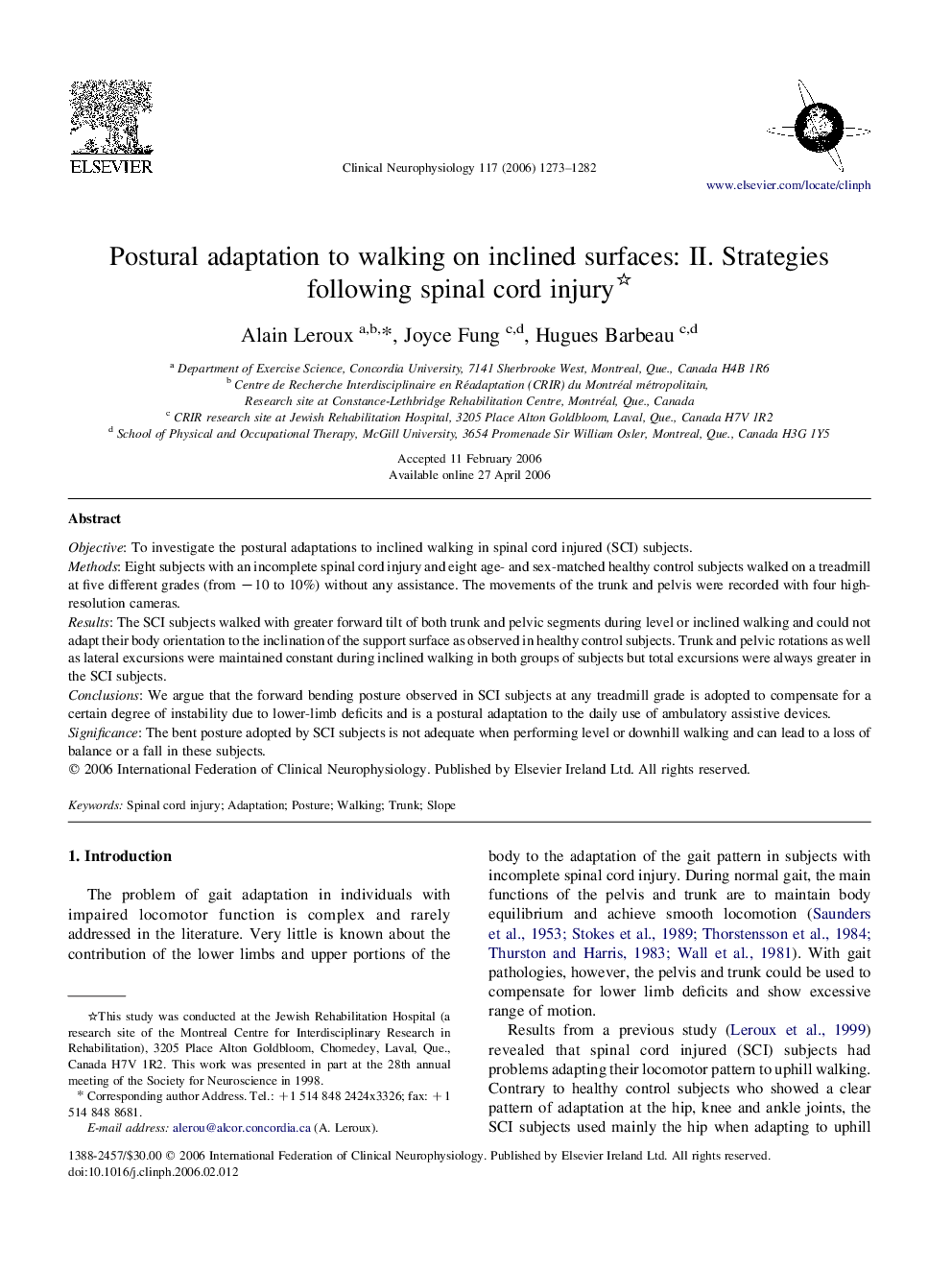| Article ID | Journal | Published Year | Pages | File Type |
|---|---|---|---|---|
| 3048736 | Clinical Neurophysiology | 2006 | 10 Pages |
ObjectiveTo investigate the postural adaptations to inclined walking in spinal cord injured (SCI) subjects.MethodsEight subjects with an incomplete spinal cord injury and eight age- and sex-matched healthy control subjects walked on a treadmill at five different grades (from −10 to 10%) without any assistance. The movements of the trunk and pelvis were recorded with four high-resolution cameras.ResultsThe SCI subjects walked with greater forward tilt of both trunk and pelvic segments during level or inclined walking and could not adapt their body orientation to the inclination of the support surface as observed in healthy control subjects. Trunk and pelvic rotations as well as lateral excursions were maintained constant during inclined walking in both groups of subjects but total excursions were always greater in the SCI subjects.ConclusionsWe argue that the forward bending posture observed in SCI subjects at any treadmill grade is adopted to compensate for a certain degree of instability due to lower-limb deficits and is a postural adaptation to the daily use of ambulatory assistive devices.SignificanceThe bent posture adopted by SCI subjects is not adequate when performing level or downhill walking and can lead to a loss of balance or a fall in these subjects.
